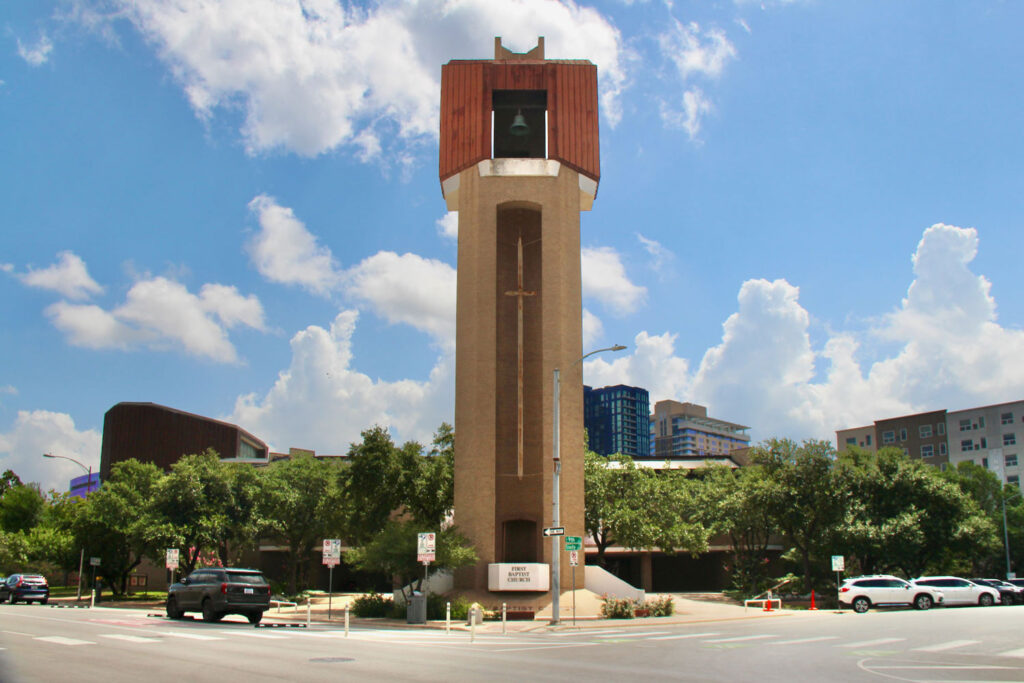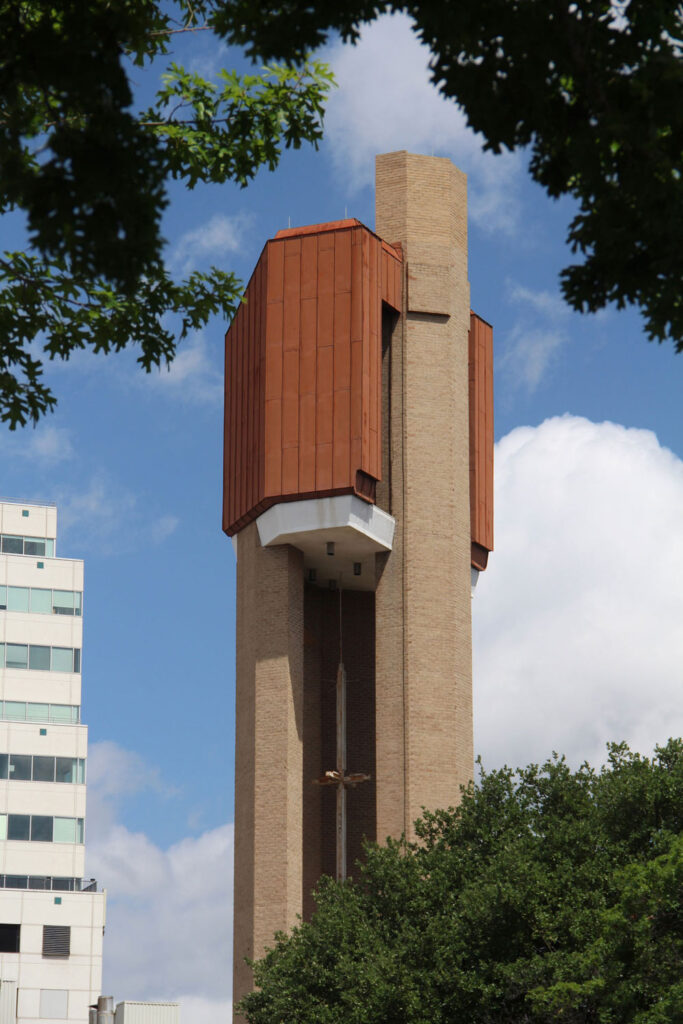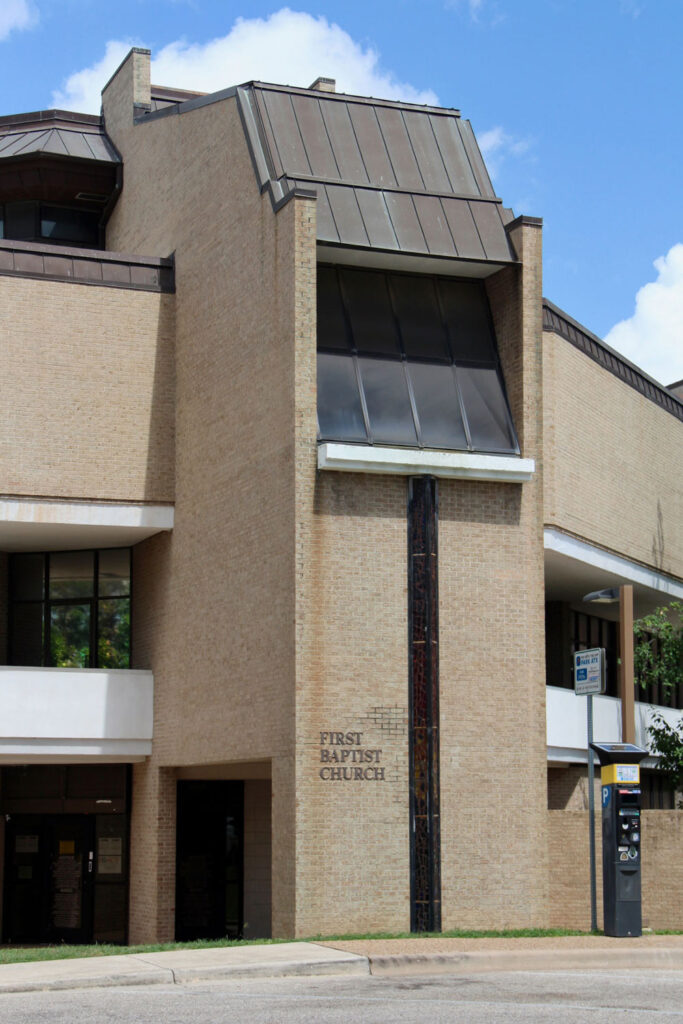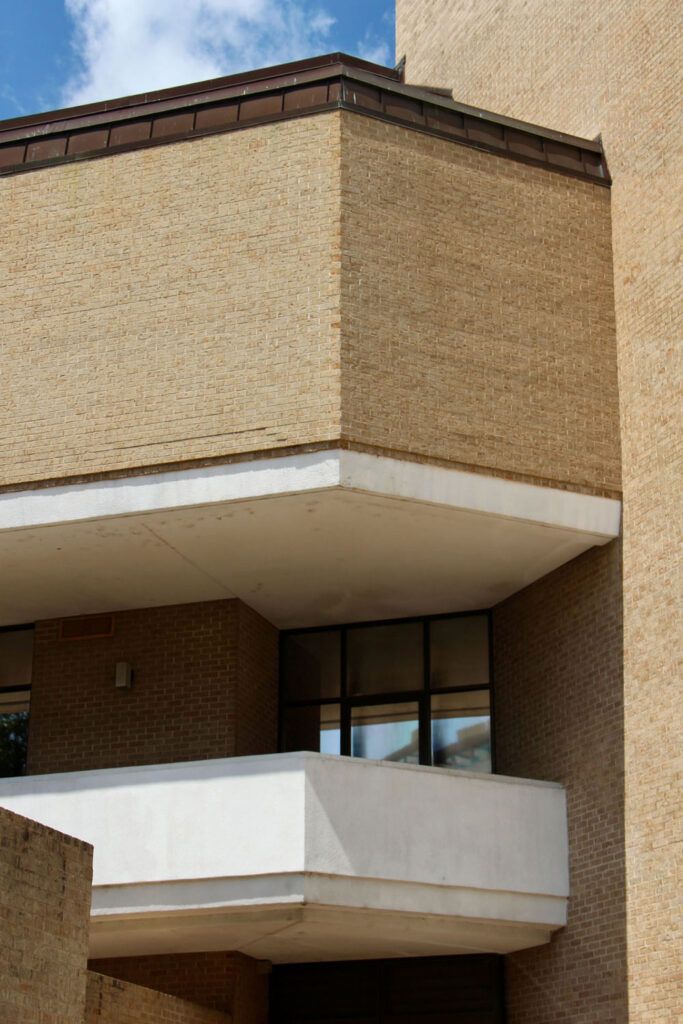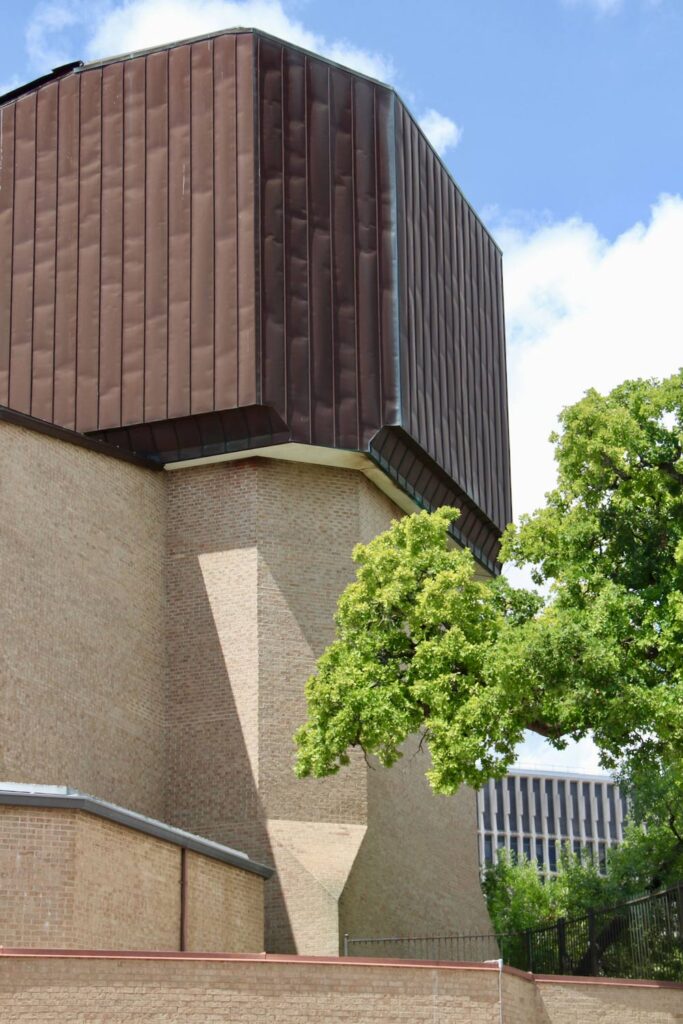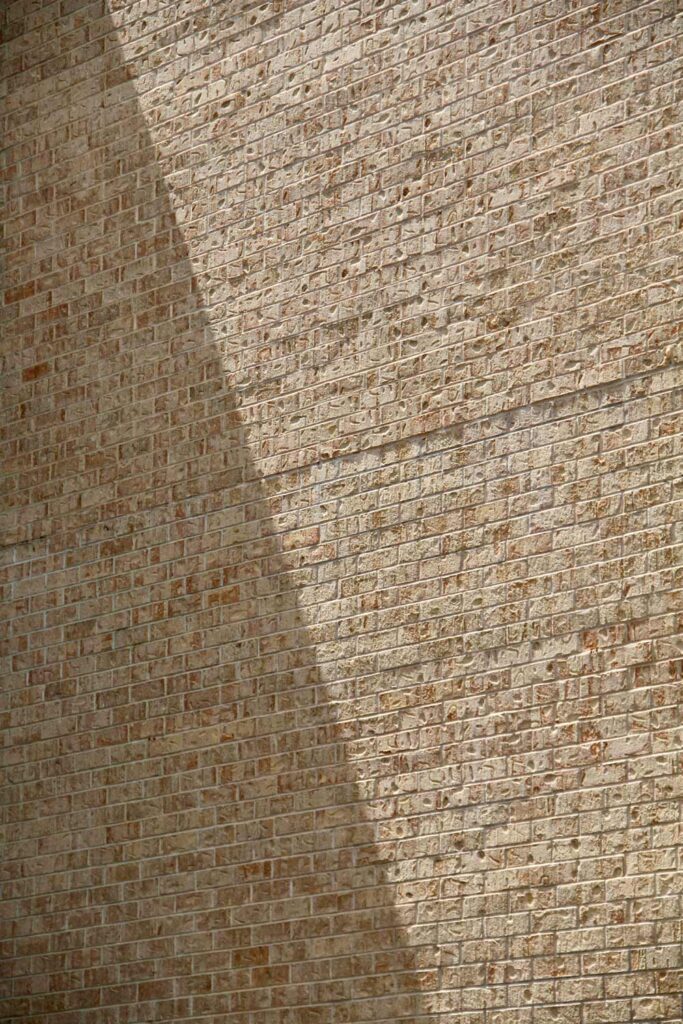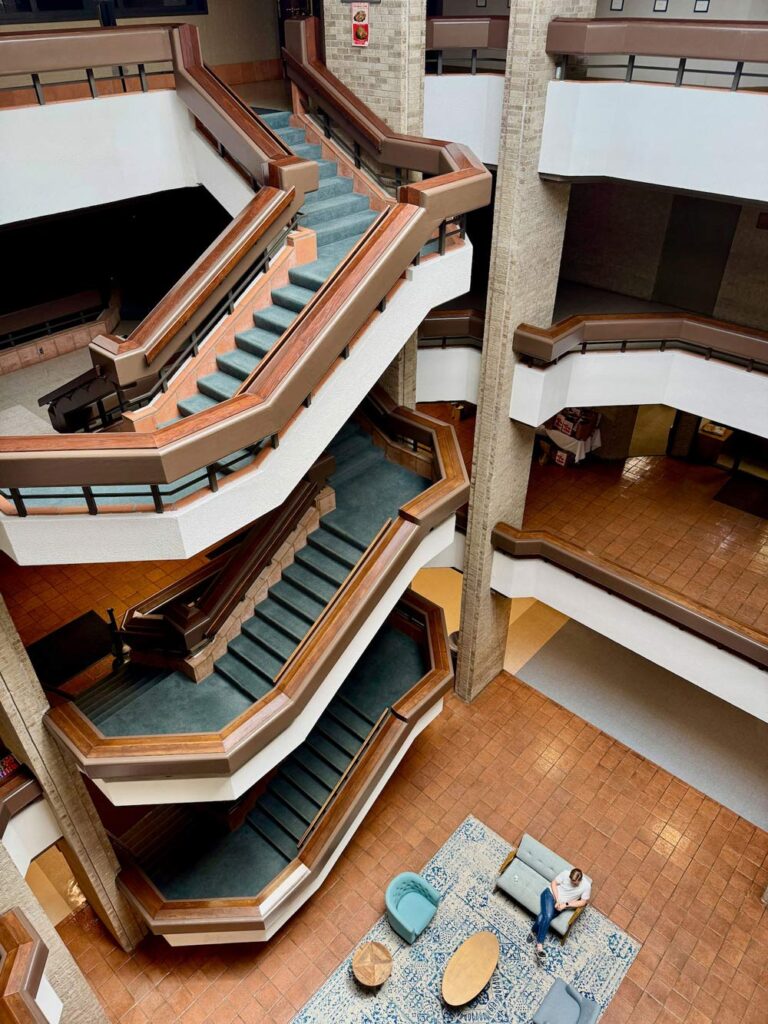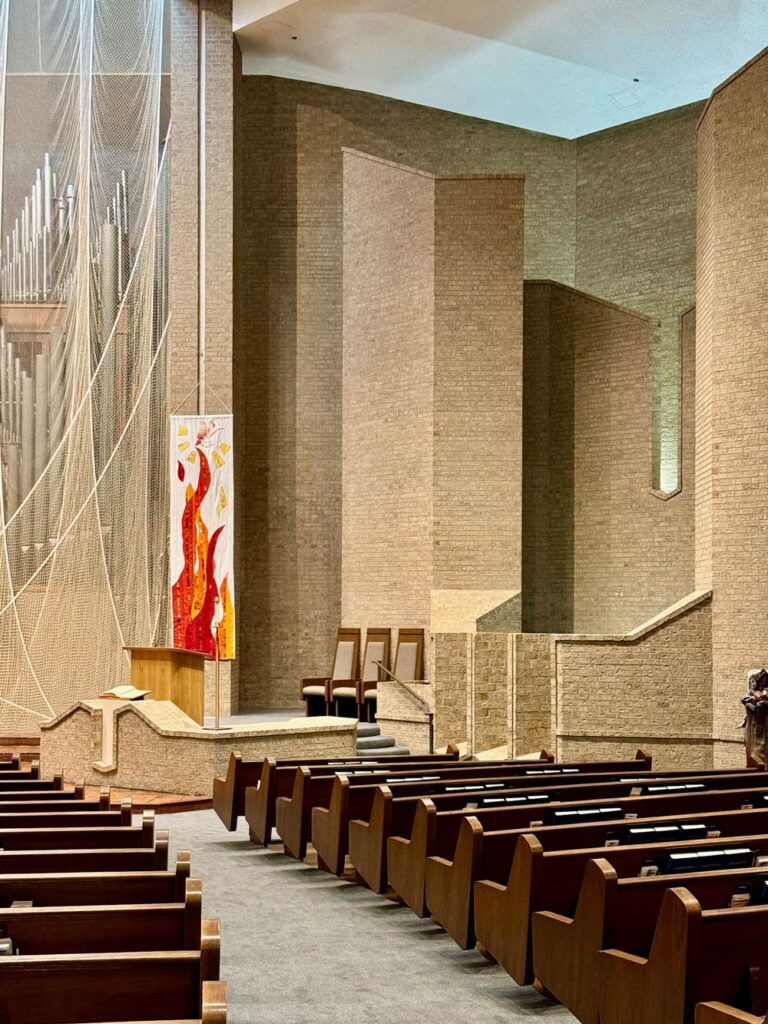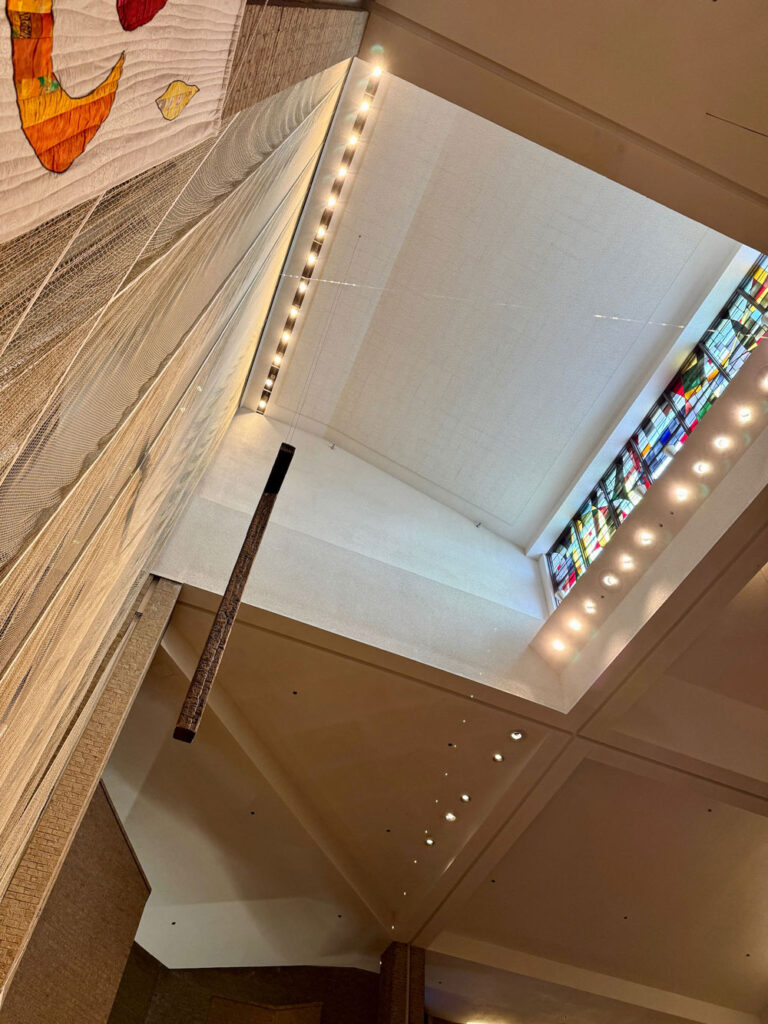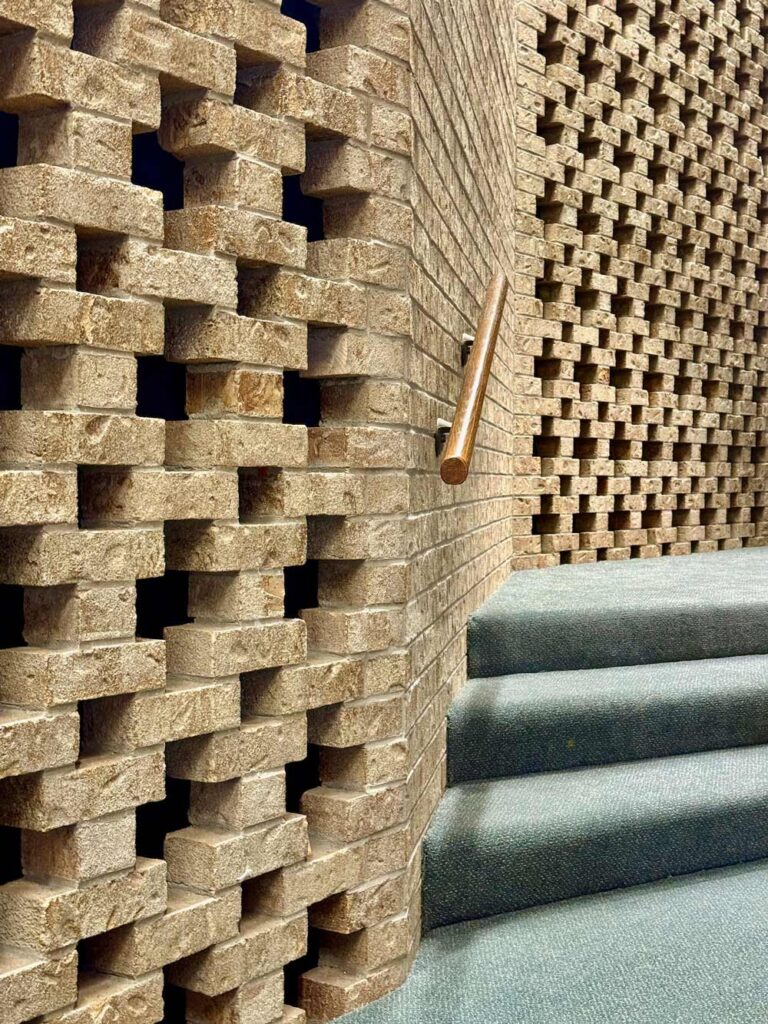- Built:
- 1969
- Architect:
- Barnes Landes Goodman Youngblood, Page Southerland Page
- Builder:
- Ricks Construction Company
- Style:
- Mid-Century Modern
Description
First Baptist Church is a 110,000-square-foot Mid-Century Modern building that rises three stories above ground, with a fourth level below grade. In addition to a sanctuary that seats nearly 1,000 people, the church includes a four-story central atrium, classrooms, offices, conference rooms, cafeteria, and a 150-seat black box theater. A detached bell tower, or campanile, occupies the southwest corner of the site.
Placemaking
With its copper-clad sanctuary and bell tower rising along Trinity Street, First Baptist Church of Austin has been a downtown landmark for over 50 years. The church’s motto is “All are welcome,” and the progressive congregation has a long history of commitment to social justice, racial reconciliation, and LGBTQIA+ rights. The architecture reflects this welcoming attitude: the building itself is rotated 45 degrees from the street grid, creating a series of public and semi-public spaces at each corner (except the northwest, which is occupied by the sanctuary) that invite passersby from all directions.
The location of First Baptist Church holds a complicated place in Austin’s urban history. The block it currently occupies, formerly known as Hamilton Square, was originally designated as one of downtown’s four public squares in Edwin Waller’s 1839 urban plan (the other three squares–Republic Square, Wooldridge Square, and Brush Square–survive today). Following the Civil War, the area between nearby Red River Street and East Avenue (now Interstate 35) was increasingly populated by freed slaves, with schools and churches to serve the African American community cropping up in the vicinity. Concerned about this perceived incursion, the City Council approved the construction of a segregated high school on Hamilton Square in 1899. A few decades later, the City’s 1928 Master Plan would effectively force the remaining Black population to the Six Square District in East Austin. When the school burned down in 1956, a three-way land swap deal deeded the site to First Baptist Church, whose congregation had outgrown its Renaissance Revival digs.
The main entrance to the church is marked by the brick-and-copper bell tower, which contains the bell from its Renaissance forerunner. Surrounded by oak trees, a public plaza leads to a series of doors separated by stained-glass panels. Exterior walkways on the second and fourth levels are visible from outside; the horizontality of these passages is broken up by additional points of entry. Facing the cardinal directions, these entrances (denoted by their copper roofs and slender stained-glass windows) are distributed around the block; corridors leading from these entrances to the central atrium divide the interior into four quadrants.
The exterior material palette of Austin common brick (tan in color with a pattern similar to falling oak leaves) and whitewashed concrete carries over to the interior, where it is accented by dark wood and terracotta tile. Flooded with natural light from above, the central atrium is characterized by the distinct alternating bands of white concrete and hefty ornamental wood railings, their horizontality broken up once again by vertical brick columns. The central staircase leads to programs on other levels, while a wall of curving plexiglass denotes the entrance to the sanctuary. There is hardly a right angle to be found.
Entering the triple-height sanctuary, the eye is immediately drawn to the altar and its soaring screen of delicately overlapping mesh, illuminated by concealed light (both natural and artificial). Fishnets hang in sweeping curves that draw the eye upward while enhancing the play of light and shadow, forming an artful veil for the church’s organ pipes. The feature is intended to recall the words that Jesus used to recruit a pair of fishermen disciples: “Follow me, and I will make you fishers of men” (Matthew 4:19).
Within the sanctuary, unique architectural features include cruciform brick screens, notched columns and beams, and stained-glass windows. To the left of the altar, a round platform may be dramatically raised from the basement below. To the right, a large baptismal font is marked by ornamental, geometric masonry. Overhead, the wraparound balcony level seems to float without the support of any visible columns; likewise, the ends of the wooden pews are each cantilevered a few feet. Narrow light coves separate the planes of the ceilings and walls, enhancing the sense of spiritual lightness.
In 2023, First Baptist announced that it had rejected several lucrative offers from developers, who would have razed the church and relocated its congregation. Determined to stay downtown, the church is seeking proposals to convert the building into “affordable community space” while remaining a place of worship. Whether the spectacular sanctuary is preserved in the process remains to be seen, but the loss of such a well-preserved example of Mid-Century Modern architecture would be a blow to Austin’s shared cultural heritage. – Bud Franck, AIA
Bud Franck, AIA
